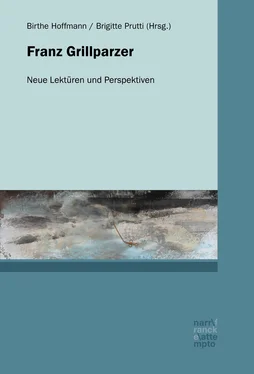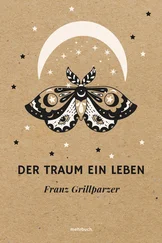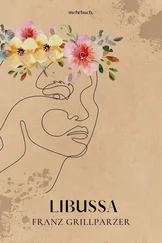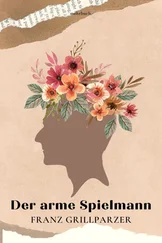The identity of Starschensky and the monk has not yet been revealed to the intra-diegetic listeners, nor would a first-time reader of the text have knowledge of it; but we do learn in the frame narrative, of course, that the monk has eyes like „schwarze Sterne,“ and that his hair is „stark gekräuselt“ and was „vormals augenscheinlich rabenschwarz“ (SW 3: 120). At least where the child’s eyes are concerned, the „Ähnlichkeit“ of her appearance seems „auf den Kopf gestellt“ only vis-à-vis her mother, but not vis-à-vis her father.5 As the narrator-monk relates his story in hindsight, though, he chooses to disregard this detail. Instead, he opts to describe the child as the fruit of a seduction legible in the red lips that visually copy her seductive mother with her „üppig aufgeworfenen“ and „beinahe zu hochroten Lippen.“ The story he tells is tinged already with his belief that his wife was an adulteress, and that he is not the father of a girl he formerly considered his daughter.
Starschensky’s belief that his wife has betrayed him forms gradually, over a period of time during which his Hausverwalter repeatedly mentions a shadowy figure he claims to have seen sneaking around at night. Different suspicions are cast upon this figure – he might be a political co-conspirator of Elga’s untrustworthy brothers, or he might be an illicit lover of Elga’s maid. Starschensky resists believing this latter story, but having no proof to the contrary, he has no choice but to acquiesce for the time being. The monk notes:
Der Graf bestrebte sich nicht bloß, über die Vorgänge […] nichts zu denken, er dachte wirklich nichts. Denn wenn der verfolgte Strauß sein Haupt verbirgt und wähnt, sein Nichtsehen der Gefahr sei zugleich ein Nichtdasein derselben, so tut der Mensch nicht anders. Unwillkürlich schließt er sein Auge vor einem hereinbrechenden Unvermeidlichen, und jedes Herz hat seine Geheimnisse, die es absichtlich verbirgt vor sich selbst. (SW 3: 135)
Here, vision is posited implicitly as a source of insight that would be able to confirm that an anxiety does not hover without reason, that a feeling harbored inside one’s heart is based on truth. However, the text also makes clear that the claim of the reliability of an epistemology of sight is entirely fabricated: in his homosocial world,6 Starschensky chooses to believe the stories of his Hausverwalter and to discount the stories of Elga and her maid; and in his role as monk narrating in hindsight, once again ensconced in an entirely homosocial world, Starschensky’s story is presented from an angle that allows for the justification of the murder of Elga. It would be just as plausible to believe Elga, to believe her maid, and to stop inventing answers to problems that don’t necessarily exist. Instead, the monk/Starschensky chooses to elevate a vague affect, an anxiety, to the level of truth by arguing that a gaze from an eye open to reality could have confirmed this anxiety’s validity.
Конец ознакомительного фрагмента.
Текст предоставлен ООО «ЛитРес».
Прочитайте эту книгу целиком, купив полную легальную версию на ЛитРес.
Безопасно оплатить книгу можно банковской картой Visa, MasterCard, Maestro, со счета мобильного телефона, с платежного терминала, в салоне МТС или Связной, через PayPal, WebMoney, Яндекс.Деньги, QIWI Кошелек, бонусными картами или другим удобным Вам способом.












